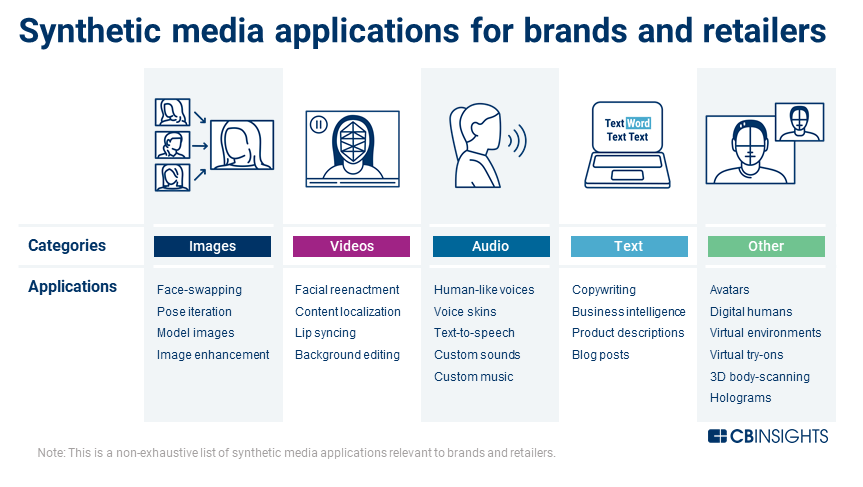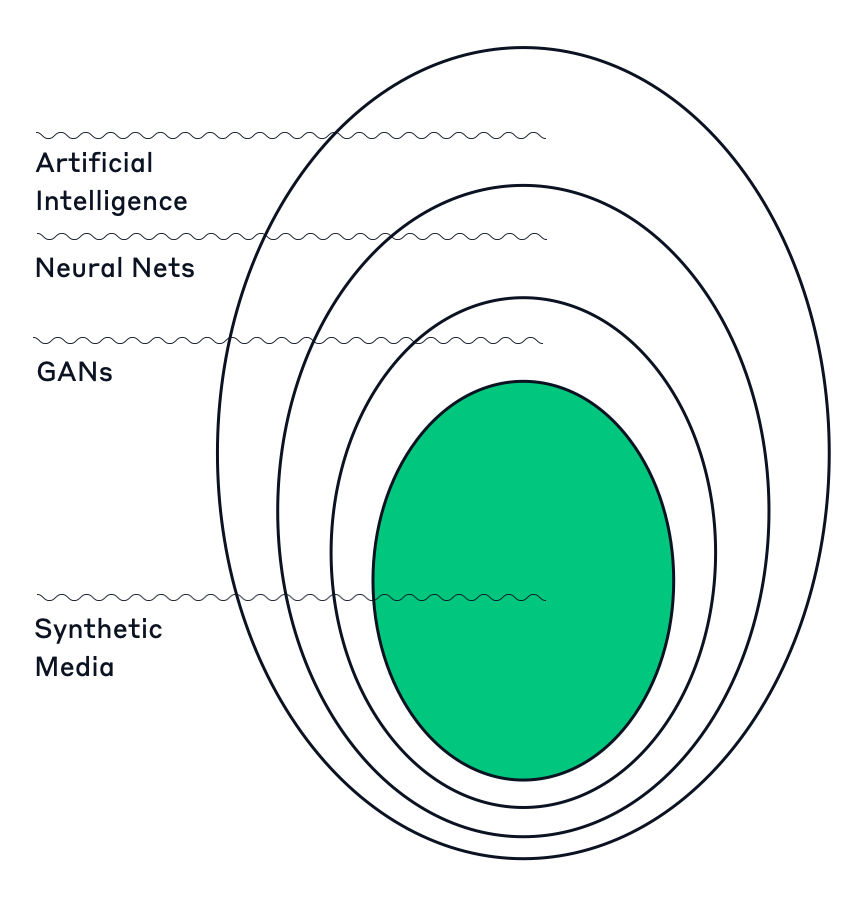Synthetic media refers to content generated by artificial intelligence, such as deepfakes and AI-generated images. It combines technology and creativity to produce realistic digital content.
Synthetic media is revolutionizing the digital landscape. AI-generated content like deepfakes and realistic images are becoming more prevalent. This technology allows for the creation of highly realistic visuals that can be used in various fields. Industries like entertainment, marketing, and education are leveraging synthetic media for innovative purposes.
The growing capabilities of AI make synthetic media a powerful tool. Its potential for both positive and negative impacts on society is significant. Ethical considerations and regulations are important as this technology evolves. Understanding synthetic media is crucial for navigating the future of digital content.
Introduction To Synthetic Media
Synthetic media is revolutionizing content creation. It blends technology with creativity. This innovation is reshaping our world.
What Is Synthetic Media?
Synthetic media uses artificial intelligence to create content. It includes text, images, videos, and audio. AI tools generate this content with minimal human input.
| Type | Description |
|---|---|
| Text | AI writes articles, stories, and reports. |
| Images | AI designs graphics and photos. |
| Videos | AI produces video clips and animations. |
| Audio | AI generates music and voiceovers. |
Historical Context
Synthetic media has roots in early AI research. In the 1950s, scientists began exploring machine learning. Over the decades, technology advanced. Computers became more powerful.
In the 2010s, deep learning emerged. This was a game changer. Deep learning made AI smarter. It could now understand and create complex content.
Today, synthetic media is everywhere. From deepfake videos to AI-written news articles, it is transforming industries.
Key Takeaways:
- Synthetic media blends AI and creativity.
- It includes text, images, videos, and audio.
- Deep learning has significantly improved AI capabilities.

Credit: www.thedigitalspeaker.com
Technologies Behind Synthetic Media
Synthetic media is revolutionizing how we create and consume content. This innovative field uses advanced technologies to generate realistic images, videos, and audio. Understanding these technologies is key to appreciating the potential and challenges of synthetic media.
Ai And Machine Learning
Artificial Intelligence (AI) and Machine Learning (ML) form the backbone of synthetic media. These technologies enable computers to learn and make decisions without human intervention. AI algorithms analyze vast amounts of data to create realistic media.
Neural networks are a type of AI that mimics the human brain. They help in generating high-quality synthetic content. Generative Adversarial Networks (GANs) are a popular type of neural network used in synthetic media.
GANs consist of two parts: a generator and a discriminator. The generator creates fake content, while the discriminator tries to detect it. This process helps in producing highly realistic synthetic media.
Deepfake Technology
Deepfake technology uses AI to create realistic fake videos and images. It combines deep learning and computer vision to manipulate visual and audio content.
A deepfake algorithm requires a large dataset of images or videos of the subject. The algorithm learns the subject’s facial expressions and movements. It then applies these learned traits to another person’s face or body.
Deepfakes can be used for entertainment, education, and more. But they also pose significant ethical and security challenges. Understanding the technology helps in addressing these issues.
| Technology | Function |
|---|---|
| AI and ML | Analyze data and generate content |
| Neural Networks | Mimic human brain to create media |
| GANs | Create and detect fake content |
| Deepfake Technology | Create realistic fake images and videos |
Understanding these technologies is crucial for navigating the future of synthetic media. They offer amazing opportunities but also require careful consideration.
Applications In Various Industries
Synthetic media is transforming how industries create and share content. Its applications range from entertainment to marketing. Let’s explore its impact on different sectors.
Entertainment And Film
Synthetic media is changing the entertainment industry. Filmmakers use it to create realistic special effects. This reduces production costs and time.
Actors can be digitally recreated. This allows for performances without physical presence. It also brings historical figures back to life.
Here are some key uses in film:
- Creating digital doubles
- Generating realistic environments
- Animating characters
Virtual reality experiences are also enhanced. This creates immersive worlds for audiences.
Marketing And Advertising
Synthetic media is revolutionizing marketing strategies. Brands use it to create engaging content. This attracts and retains customers.
Here are some applications in marketing:
- Personalized video ads
- Interactive product demos
- Virtual influencers
AI-generated content is tailored to individual preferences. This increases customer engagement and satisfaction.
Table of Key Applications:
| Application | Industry |
|---|---|
| Digital doubles | Entertainment |
| Personalized video ads | Marketing |
| Interactive product demos | Marketing |
| Animating characters | Entertainment |
Synthetic media offers limitless possibilities. It is changing how industries operate and innovate.

Credit: www.cbinsights.com
Benefits Of Synthetic Media
Synthetic media offers many advantages over traditional media. These benefits make synthetic media an appealing choice for creators and businesses. Let’s explore some key benefits.
Cost Efficiency
Creating content with synthetic media is very cost-efficient. Traditional media production is often expensive. Synthetic media reduces the need for costly equipment and personnel. This means more savings and higher profit margins.
For example, using digital actors instead of real actors saves money. Digital sets also eliminate the need for expensive filming locations. This makes synthetic media a smart choice for budget-conscious creators.
Creative Freedom
Synthetic media offers unparalleled creative freedom. Traditional media limits what can be created. With synthetic media, anything is possible. Creators can bring their wildest ideas to life.
Digital tools allow for easy manipulation of images and sounds. This enables unique and innovative creations. Synthetic media also allows for quick adjustments and changes. This flexibility is invaluable in the fast-paced world of content creation.
Challenges And Ethical Concerns
Synthetic media brings many benefits but also raises serious concerns. These challenges range from misinformation risks to intellectual property issues. Understanding these challenges is key to navigating the synthetic media landscape.
Misinformation Risks
Synthetic media can easily spread false information. This is a major concern for society. Fake news and deepfakes can mislead people. They can also damage reputations and trust.
- Deepfakes can create realistic yet fake videos.
- False images can spread quickly on social media.
- Misinformation can influence public opinion and elections.
To combat this, we need better tools. Fact-checking and verification methods are essential. Educating the public about these risks is also important.
Intellectual Property
Intellectual property in synthetic media is a complex issue. Who owns the rights to a computer-generated work? This question is not easy to answer.
| Issue | Details |
|---|---|
| Ownership | Determining who owns synthetic content is challenging. |
| Copyright | Existing laws may not cover synthetic media. |
| Licensing | Using synthetic media might require new types of licenses. |
Creators need to understand these issues. Clear guidelines and laws are needed to protect both creators and users.
Notable Examples And Case Studies
In the world of synthetic media, there are many fascinating examples. These examples showcase the power of technology in creating digital content. This section will explore some of the most notable examples and case studies.
Virtual Influencers
Virtual influencers are digital characters that exist on social media. They look and act like real people. Brands use them to engage with their audience. These influencers can appear in advertisements, share posts, and even interact with followers.
One famous virtual influencer is Lil Miquela. She has over 3 million followers on Instagram. Lil Miquela collaborates with top fashion brands. She has also appeared in music videos and magazine covers.
| Virtual Influencer | Followers | Brands Collaborated |
|---|---|---|
| Lil Miquela | 3 million | Prada, Calvin Klein |
| Imma | 300,000 | Adidas, Valentino |
Ai-generated Art
AI-generated art is another remarkable example of synthetic media. Artists and technologists use artificial intelligence to create stunning visuals. These artworks can be paintings, music, or even movies.
The Portrait of Edmond de Belamy is a famous AI-generated artwork. It was created by a group called Obvious. This portrait was sold at an auction for $432,500. The painting was made using a technique called GANs (Generative Adversarial Networks).
- AI generates a new image.
- Another AI criticizes the image.
- The process repeats until the artwork is complete.
AI-generated art opens up new possibilities. Artists can collaborate with AI to push creative boundaries.
Future Trends In Synthetic Media
Synthetic media is changing how we create and consume content. Innovations are pushing boundaries. Let’s explore the future trends in synthetic media.
Real-time Content Creation
Real-time content creation is set to revolutionize media. Imagine creating videos and images instantly. This will save both time and resources. AI algorithms can generate content on the fly. This means no more long production times.
Live streaming will also benefit. Real-time enhancements will be possible. Viewers will get a more immersive experience. This will make content more engaging. Creators will have more tools at their disposal.
- Instant video generation
- Live streaming enhancements
- Resource savings
Enhanced Personalization
Enhanced personalization is the future. AI can tailor content to individual preferences. Imagine watching a movie where the lead actor looks like you. Personalized content will be more appealing to users.
Brands can use this for targeted advertising. Tailored ads will be more effective. User engagement will increase. This will lead to higher conversion rates. Personalization will transform user experiences.
| Feature | Benefit |
|---|---|
| Customized visuals | Higher user engagement |
| Targeted ads | Increased conversion rates |
The future of synthetic media is bright. Real-time content creation and enhanced personalization will lead the way. These trends will shape the media landscape.

Credit: blog.paperspace.com
Frequently Asked Questions
What Is Synthetic Media With An Example?
Synthetic media refers to content created using AI and algorithms. Deepfake videos are a common example.
What Is A Synthetic Medium?
A synthetic medium is an artificially created environment. It supports the growth of microorganisms or cells. This medium contains precise nutrients and conditions.
What Is An Example Of A Synthetic Content?
An example of synthetic content is AI-generated text, such as articles or product descriptions created by algorithms.
What Is Synthetic And Non Synthetic Media?
Synthetic media is artificially created content, like digital images or videos. Non-synthetic media is real, unaltered content from actual events.
Conclusion
Synthetic media is transforming industries and reshaping digital content. Its potential is vast, with applications spanning various fields. Embracing this technology can lead to innovative and engaging experiences. Stay informed and explore opportunities to leverage synthetic media for your needs.
The future of content creation is here, and it’s synthetic.

